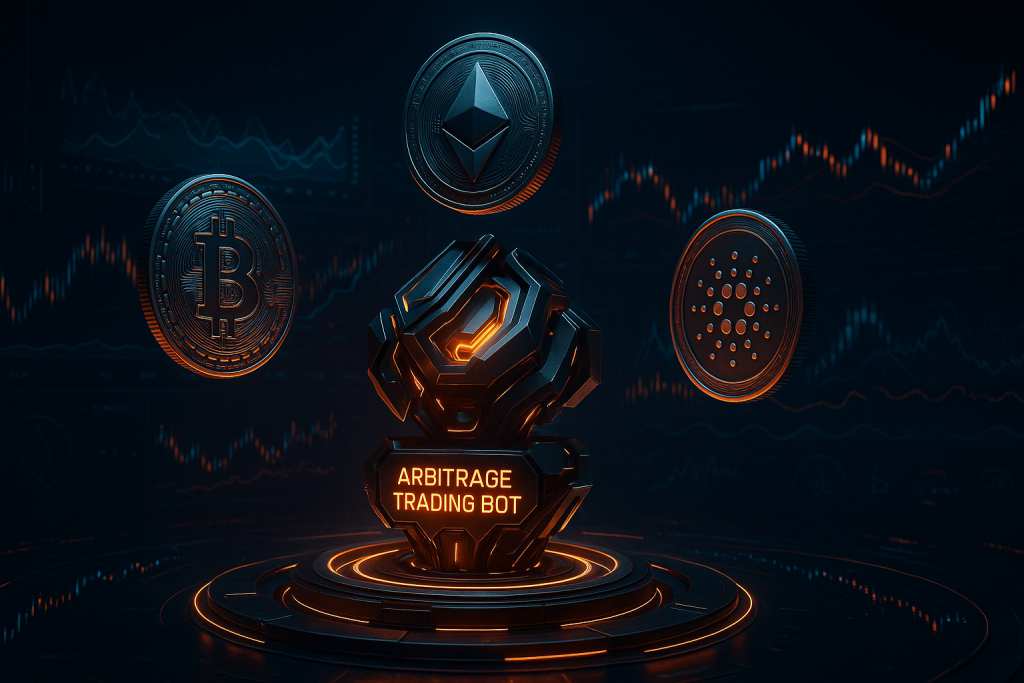Arbitrage trading bot

The automation of trading processes is becoming increasingly popular. One of the most interesting and promising tools in this area is the arbitrage trading bot. This software algorithm, capable of executing trades without human intervention, represents a fusion of programming and financial analytics at a very high level.
Arbitrage trading is a strategy in which a trader profits from price differences for the same asset across different venues. For example, if Bitcoin is trading at 30,000 dollars on one exchange and 30,200 dollars on another, an arbitrage trader buys it on the first and immediately sells it on the second, capturing the spread as profit. In theory, it sounds simple. In practice, it demands instant reaction, deep analysis, and continuous monitoring – which is exactly why the bot becomes indispensable.
An arbitrage bot operates according to a predefined algorithm. It connects to multiple exchanges via APIs, collects data on prices and volumes, calculates potential profit, and, when conditions are favourable, executes trades automatically. Thanks to its high execution speed and ability to process large amounts of data in fractions of a second, such a bot can identify arbitrage opportunities that a human would simply miss.
The key advantage of using a bot is its immunity to human factors. It doesn’t get tired, doesn’t get emotional, and doesn’t hesitate. It runs around the clock, following the rules it was given. That does not mean it can be left completely unattended. On the contrary, it needs to be updated regularly, adapted to changing market conditions, and monitored to ensure the code behaves as intended.
Arbitrage trading is essentially a way to generate profit from price imbalances for the same asset on different markets. Put simply, the trader buys where it’s cheaper and simultaneously sells where it’s more expensive. The difference between the two prices is the profit.
The core idea behind arbitrage is speed in exploiting market inefficiencies. Financial markets are not perfectly synchronised: on one exchange, the price of an asset can lag for a few seconds or even minutes, while on another it has already moved. That delay creates the window for arbitrage.
Building such a bot is a complex task that requires knowledge of programming, mathematics, and finance. You need to account for exchange fees, order execution speed, potential latency, and other nuances that can affect the outcome. Sometimes, arbitrage opportunities disappear in a matter of seconds, which means the bot must be “smart” enough to act almost instantly.
An arbitrage trading bot is not just a tool; it is, in practice, an active participant in the market. It reflects our drive towards automation and optimisation of trading workflows. Of course, it does not guarantee profit and it still requires a competent approach, but when configured and managed properly it can significantly increase trading efficiency. Looking ahead, technologies like this may well form the backbone of trading on financial markets.
Category news: Markets and Instruments Product and Bot Features
-

Bot for trading goods
In an era of rapidly advancing digital technology, businesses are increasingly turning to automated solutions that simplify and accelerate workflows. One such solution is trading bots – programs capable of replacing or complementing human labor in the sales process. Their integration into product trading offers a number of substantial advantages that significantly enhance business efficiency. […]
-

Real-Time Trading Bot
Real-time trading bots connect directly to trading platforms via API. They receive up-to-the-second data on prices, volumes, supply and demand, and use predefined algorithms to execute trades. These algorithms can be simple – for example, buying when the price drops and selling when it rises – or highly sophisticated, incorporating technical analysis, artificial intelligence, or […]
-

ETF Trading Bot
Thanks to rapid technological development, investing is gradually shifting from a domain reserved for professionals to an area of widespread public interest. Exchange-traded funds (ETFs), in particular, have grown extremely popular, offering diversification, transparency, and ease of purchase. Against this backdrop, a new tool is emerging – an ETF trading bot. ETF funds, or exchange-traded […]
-

Algorithmic trading bot
The use of trading bots in algorithmic trading has become a true breakthrough in the financial world. These intelligent systems offer a range of significant advantages, which is why they are increasingly replacing manual trading and opening up new horizons for market participants. Algorithmic trading is a method of automated buying and selling of assets […]
Latest news
-

Bot for trading goods
In an era of rapidly advancing digital technology, businesses are increasingly turning to automated solutions that simplify and accelerate workflows. One such solution is trading bots – programs capable of replacing or complementing human labor in the sales process. Their integration into product trading offers a number of substantial advantages that significantly enhance business efficiency. […]
-

SHIB
SHIB, or Shiba Inu, is a cryptocurrency that emerged in 2020, inspired by the popular meme coin Dogecoin. It quickly caught the attention of the crypto community thanks to its extremely low price per token and a marketing strategy centered around social media and fan engagement. Although SHIB was initially conceived as a “joke,” its […]
-

Real-Time Trading Bot
Real-time trading bots connect directly to trading platforms via API. They receive up-to-the-second data on prices, volumes, supply and demand, and use predefined algorithms to execute trades. These algorithms can be simple – for example, buying when the price drops and selling when it rises – or highly sophisticated, incorporating technical analysis, artificial intelligence, or […]
-

ETF Trading Bot
Thanks to rapid technological development, investing is gradually shifting from a domain reserved for professionals to an area of widespread public interest. Exchange-traded funds (ETFs), in particular, have grown extremely popular, offering diversification, transparency, and ease of purchase. Against this backdrop, a new tool is emerging – an ETF trading bot. ETF funds, or exchange-traded […]

